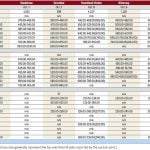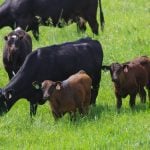Reference labs in Canada and the U.K. have confirmed the latest U.S. domestic case of BSE to be the "atypical" strain that’s unlikely to have been contracted through cattle feed.
The U.S. Department of Agriculture’s Animal and Plant Health Inspection Service (APHIS) last month confirmed BSE in a dairy cow shipped for rendering from a farm in central California.
USDA’s samples were then sent to World Organization for Animal Health (OIE) reference labs in Canada and England, both of which have confirmed the cow was positive for atypical (L-type) BSE.
Read Also

Ample supplies and improved livestock sector to boost Canadian feed sector: FCC
Abundant feed grain supplies and improved profitability for the livestock sector should support strong feed demand and sales through the winter, says a new report from Farm Credit Canada.
"Atypical" describes a case of BSE in which the disease’s pattern and expression doesn’t fit what’s expected and may not have come through feed, but could have formed spontaneously within the cow.
The two dairies that had been held under quarantine during APHIS’ investigation have been released from those quarantines, after inventories were completed and records were reviewed, USDA said in a release Friday.
Investigation of feed records at the index dairy found "no anomalies" and audits of all the feed suppliers to the index site found them "in compliance with the regulations," USDA said.
APHIS previously announced it had found two progeny of the positive cow: a stillborn calf and a second animal that has since been euthanized and tested negative for BSE.
Of "several hundred" potential birth cohort cattle, the focus of APHIS’ tracing is on 10 to 12 cattle which may still be alive and have records that might allow them to be located, the service said.
"The remaining potential cohorts are no longer alive or have otherwise been ruled out," APHIS said.
Related story:
BSE confirmed in California dairy cow, April 25, 2012
















